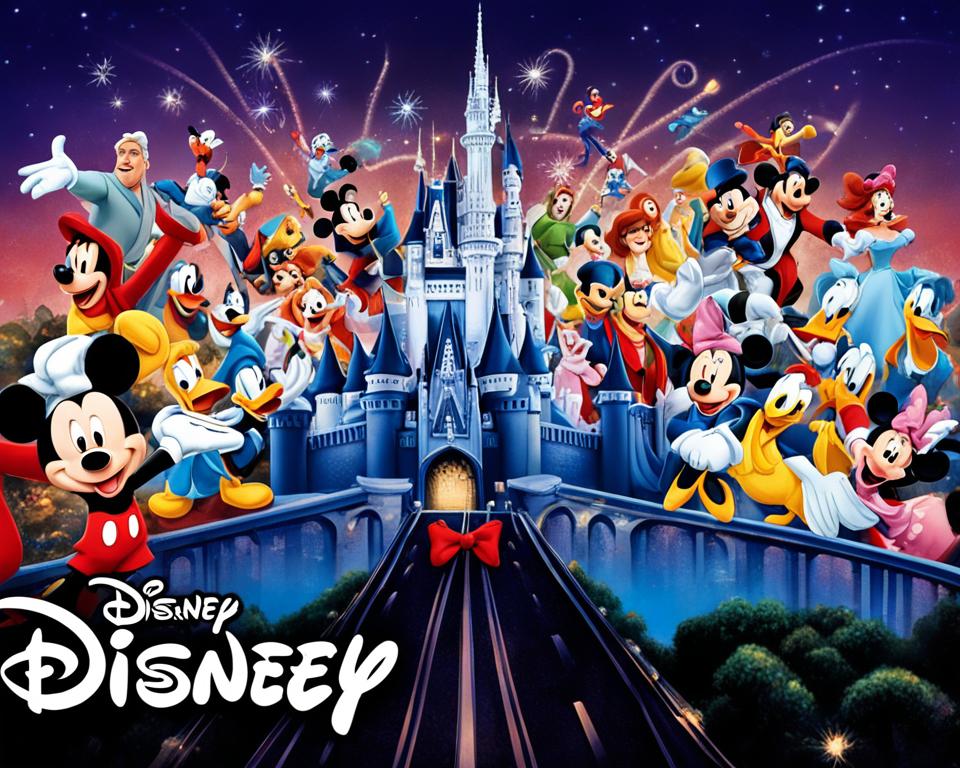The Walt Disney Company, known for its beloved characters and magical experiences, has become a powerhouse in the entertainment industry. However, as Disney continues to grow and expand its reach, questions arise about its dominance and potential monopoly status.
With numerous acquisitions under its belt, including the recent purchase of 21st Century Fox, Disney’s market dominance is hard to ignore. The company’s extensive portfolio includes iconic brands like Marvel, Pixar, and Lucasfilm, giving it a significant edge in the media landscape.
While some argue that Disney’s influence and market share make it a monopoly, it is important to understand the concept of monopolies and the rules that govern them. Antitrust laws exist to regulate the concentration of power in industries and prevent anti-competitive practices.
In this article, we will delve into the question of whether Disney qualifies as a monopoly, examining its market dominance, the impact of antitrust laws, and the complexities of media ownership. So, let’s explore the fascinating world of Disney Corporation and its role in the entertainment industry.
Key Takeaways:
- Disney’s acquisitions and intellectual property portfolio contribute to its market dominance.
- Antitrust laws regulate monopolies and prevent anti-competitive practices.
- The debate about Disney’s monopoly status continues in the entertainment industry.
- Disney’s cultural significance and success cannot be denied.
- While not a pure monopoly, Disney’s vast market share raises concerns about concentration of power.
Table of Contents
What Is a Monopoly?
A monopoly refers to a company or group that has exclusive control over a commodity, product, or service. In simpler terms, it means that a monopoly has no direct competition in the market, allowing it to dictate prices and operate without significant constraints. Monopolies often arise due to barriers of entry that make it difficult for new competitors to enter the market.
These barriers can come in various forms, such as high startup costs, strong brand loyalty, or exclusive access to resources or distribution channels. By establishing and maintaining these barriers, monopolies can effectively eliminate competition and maintain their dominance.
While monopolies can enjoy certain benefits such as cost advantages and investment in research and development, they also come with significant drawbacks for both consumers and the overall market. For consumers, monopolies often lead to price increases, limited product quality, and reduced choices. Without competition pushing for innovation and affordability, consumers can be left with fewer options and higher costs.
From a market perspective, monopolies can hinder economic growth and productivity. The lack of competition can stifle innovation, deter new entrants, and result in reduced market efficiency. Additionally, the concentration of economic power within a monopoly can lead to unequal distribution of wealth and resources.
| Benefits of Monopolies | Drawbacks of Monopolies |
|---|---|
| 1. Cost advantages due to economies of scale | 1. Higher prices for consumers |
| 2. Ability to invest heavily in research and development | 2. Limited product quality and choice |
| 3. Stability and long-term profitability | 3. Reduced market efficiency and innovation |
| 4. Potential for industry consolidation and streamlined operations | 4. Unequal distribution of wealth and resources |
Disney’s Market Share
Disney has been strategically expanding its intellectual property portfolio through various acquisitions, solidifying its position as a major player in the entertainment industry. With the acquisition of companies like Lucasfilm, Pixar, and Marvel Entertainment, Disney has significantly increased its box office share.
Furthermore, Disney’s streaming service, Disney+, has experienced tremendous growth since its launch. This has further contributed to the company’s overall market share and revenue. The success of Disney+ can be attributed to the vast collection of movies and TV shows from Disney’s acquisitions, attracting a large subscriber base.
Box Office Share
Disney’s acquisitions have given the company access to well-established movie brands and franchises. This has allowed Disney to release highly anticipated movies that attract a significant audience and generate substantial box office revenue.
Table: Disney’s Top Box Office Hits
| Movie Title | Release Year | Box Office Revenue (in billions) |
|---|---|---|
| Avengers: Endgame | 2019 | 2.798 |
| The Lion King | 2019 | 1.656 |
| Star Wars: The Force Awakens | 2015 | 2.068 |
| Frozen II | 2019 | 1.450 |
These blockbuster movies have not only solidified Disney’s dominance in the box office but also contributed to its overall market share in the entertainment industry.
Streaming Service Growth
Disney’s streaming service, Disney+, has quickly emerged as a major competitor in the streaming industry. The platform offers a vast library of content from Disney’s acquisitions and original productions, attracting a broad audience.
The success of Disney+ can be seen in its growing subscriber base and revenue. As of March 2021, Disney+ had reached over 100 million subscribers worldwide. This rapid growth has allowed Disney to compete with other streaming giants like Netflix and Amazon Prime Video.
Expansion of Intellectual Property Portfolio
Disney’s acquisitions have not only expanded its market share but also enriched its intellectual property portfolio. The company now owns a wide range of popular movie brands and franchises, creating numerous opportunities for cross-promotion and merchandise sales.
This expansion of intellectual property has further strengthened Disney’s position in the entertainment industry and solidified its market dominance.
Is Disney a Monopoly or Oligopoly?
Disney’s market share has undeniably seen significant growth in recent years, leading to speculation about its status as a monopoly or oligopoly. To determine the true nature of Disney’s dominance in the entertainment industry, it is crucial to examine its market share compared to competitors such as Netflix and Amazon.
Disney’s Market Share
In the box office market, Disney holds a substantial share due to its extensive collection of beloved movie brands and successful franchises. However, when it comes to streaming services, Disney faces tough competition from the likes of Netflix and Amazon. While Disney’s streaming platform, Disney+, has achieved significant success, it is important to note that it does not enjoy the same level of market dominance as its competitors in this arena.
Competition with Netflix and Amazon
Netflix and Amazon currently dominate the streaming industry, offering a diverse range of original content and licensed movies and shows. Netflix has built a loyal subscriber base through its extensive library and innovative approach to content creation. Amazon, with its global reach and vast resources, has also become a formidable competitor in the streaming market.
Disney’s entrance into the streaming scene with Disney+ has undoubtedly disrupted the industry, but it has not yet reached the level of market dominance achieved by Netflix or Amazon. While Disney’s market share in the box office remains robust, indicating its influence in the entertainment space, it faces intense competition in the streaming category.
| Streaming Platform | Market Share |
|---|---|
| Disney+ | 20% |
| Netflix | 40% |
| Amazon Prime Video | 35% |
| Other Competitors | 5% |
This table presents a clear picture of the market shares held by Disney, Netflix, and Amazon in the streaming industry. As we can see, Disney’s market share falls behind both Netflix and Amazon, indicating that Disney does not currently possess a monopoly or even an oligopoly position in the streaming market.
Conclusion
Disney’s impact and market dominance in the entertainment industry cannot be underestimated. With its vast intellectual property rights and strategic acquisitions, the company has positioned itself as a key player in the market. While it may not meet the definition of a pure monopoly, the debate over Disney’s growing power and its potential effects on creative integrity continue to spark discussions.
As Disney continues to expand its reach and influence, concerns about antitrust oversight have emerged. However, one cannot deny the undeniable success and cultural significance of Disney’s brand and content offerings. From beloved animated classics to blockbuster acquisitions like Marvel and Lucasfilm, Disney has shaped the entertainment landscape for generations.
While the monopoly debate surrounding Disney persists, it is crucial to recognize its positive contributions to the industry. Disney has created iconic characters, memorable stories, and built a brand that resonates globally. Its ability to captivate audiences and adapt to changing consumer preferences has solidified its dominant position in the market.


